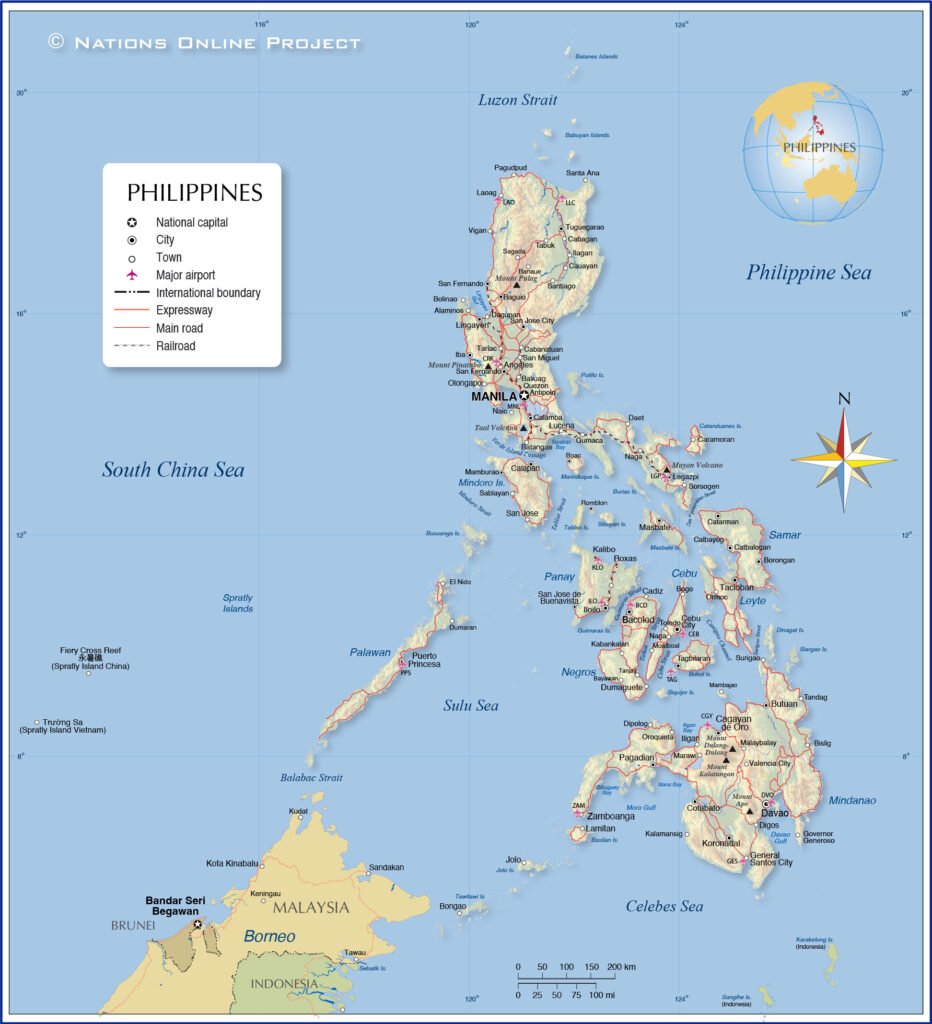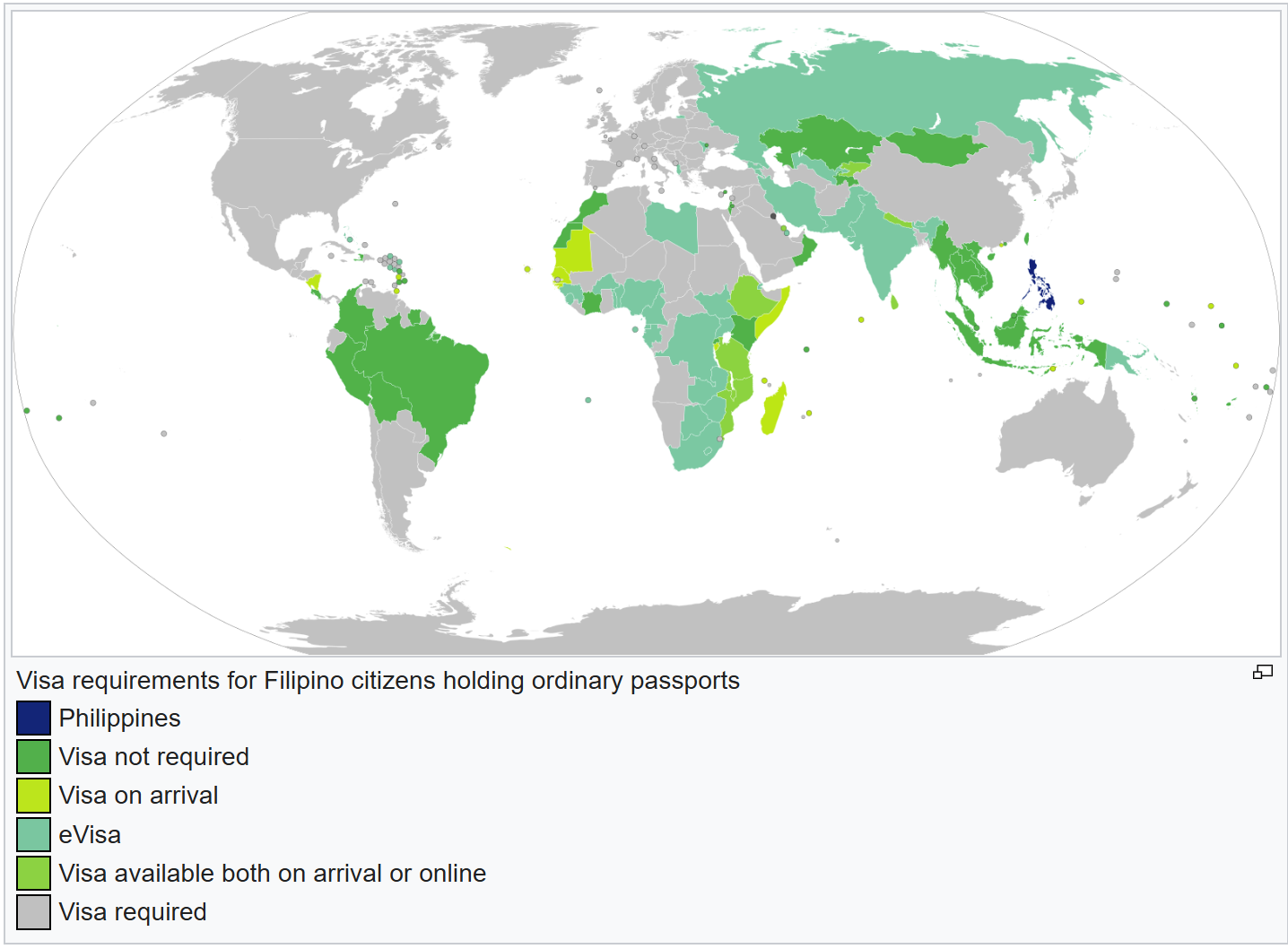Home > Asia > Philippine > How To Get Residency in the Philippines: A Comprehensive Guide
How To Get Residency in the Philippines: A Comprehensive Guide
Capital: Manila
Population: 114,163,719 (2024, 12th)
Ethic Group: 33.7% Visayan, 24.4% Tagalog, 8.4% Ilocano, 6.8% Bicolano
Area: 343,448 km2 (64th)
Offical Language: Filipino & English
Currency: Philippine peso (as of July 16th, 2025, 1 peso = 0.018 USD)
GDP per Captial: $12.930 (2025 estimated, 116th)
Human Development Index: 0.720 (2023, 113rd)

Country Profile:
The Philippines is an archipelagic nation in Southeast Asia, comprising 7,107 islands. While it’s frequently struck by typhoons and earthquakes, its climate has also fostered an abundance of natural resources and rich biodiversity.
For years, the Philippines has maintained an open visa policy. This openness is evident in two ways: a substantial number of Filipino workers are employed overseas in places like Hong Kong, other Southeast Asian nations, and the Middle East. Concurrently, the government actively attracts foreign visitors and residents through various special residency visas that have low thresholds and minimal requirements.
Visa & Immigration System:
The Philippines offers a standard visa system for foreigners, including work visas and family reunification visas. However, what attracts most foreigners to the country is its range of special visa programs.
These special visa programs generally have simple requirements and procedures, allowing you to quickly obtain permanent residency in the Philippines by investing tens of thousands of dollars.
This kind of permanent residency does not require you to actually live in the Philippines, but it is usually linked to your investment: if you withdraw your investment, the visa may be revoked.

Special Visa Programs:
1. Special Resident Retiree’s Visa (SRRV): The SRRV is one of the most popular options for foreigners seeking Philippine residency. By depositing a sum of money into a local bank, you can obtain permanent residency linked to this deposit.
There are two main categories within the SRRV program:
- Smile Card: For individuals aged 50 and above, a deposit of USD 20,000 in a local bank qualifies you for a Smile Card.
Unfortunately, the Philippine Retirement Authority has temporarily suspended the SRRV Smile program, and it’s uncertain when it will reopen.
- Classic Card: For those without a pension, a deposit of USD 50,000 (or USD 20,000 for applicants over 50 years old) grants eligibility for the Classic Card.
2. Special Investor Residence Visa (SIRV): The SIRV is an investment-based visa that requires a minimum investment of USD 75,000 in a business. The business must not be involved in real estate or foreign trade sectors.
3. Aurora Economic Zone Special Resident Visa (ASRV): The ASRV, also known as the APECO Special Resident Visa, is a residency program based on donations promoted by the Aurora Economic Zone. The program was temporarily suspended by the Philippine Bureau of Immigration at the end of 2023, and there is currently no information on whether it will be reopened or permanently canceled.
This visa was available only to citizens of four countries: China, Japan, South Korea, and India. In the past, paying a membership fee between USD 40,000 and USD 52,000 would grant you a permanent ASRV membership card, allowing unlimited stay, residence, and entry into the Philippines.
4. FIP Investor Visa: Launched in 2024, the FIP Investor Visa is a special investment program designed to boost the economy of the Freeport Area of Bataan (FAB). By depositing a minimum of USD 75,000 with a FAB partner, investors can directly obtain permanent residency in the Philippines.
This new visa program offers several benefits, including minimal restrictions for participants (no requirements for net worth, income, or residency), a fast approval process, and the potential for naturalization after a period of residence.
Dependents:
For most Philippine visas, the main applicant’s spouse and unmarried children under 21 can join as secondary applicants to relocate to the country.
Citizenship:
After legally residing in the Philippines for ten years, if you can demonstrate integration into Philippine society, a basic understanding of the local political system, history, and culture, and the ability to speak Filipino, you may choose to apply for naturalization and become a citizen of the Philippines.
For foreign investors who establish new industries or introduce new technologies in the Philippines, the residency requirement can be reduced to five years.
Passport Power:
The Philippines recognizes dual citizenship, with its passport ranked 72nd globally. Passport holders can freely travel (visa-free or visa on arrival) to 65 countries and regions worldwide, including Russia, Southeast Asia and some South American countries.

Useful Links:
The Philipplines’ board of investment: https://boi.gov.ph/
The Philippines’ FIP visa: https://philippinesfiv.com/#media
the Freeport Area of Bataan: https://afab.gov.ph/
Home > Asia > Philippine > How To Get Residency in the Philippines: A Comprehensive Guide